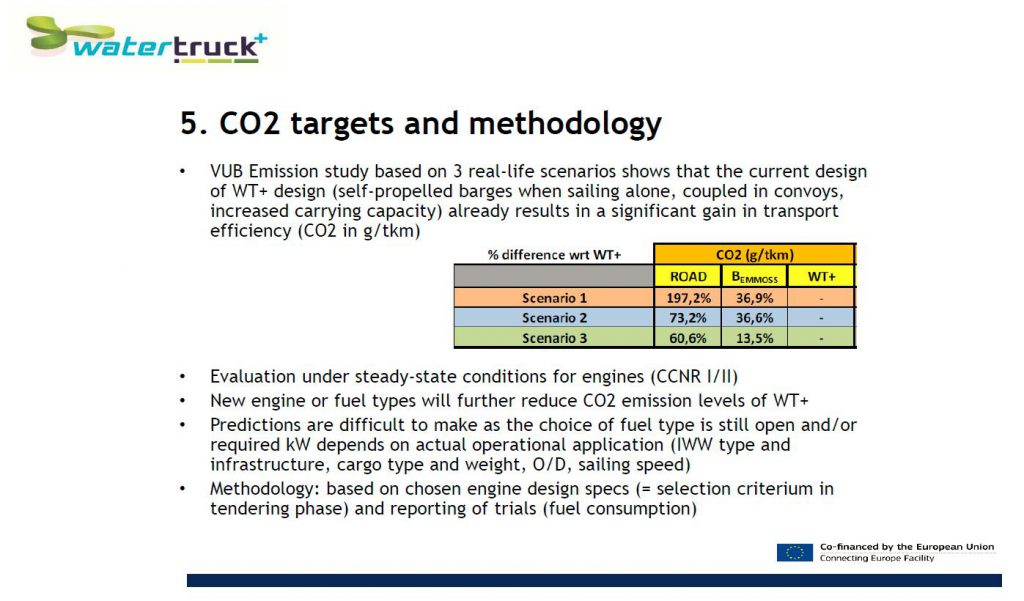Emission
How will Watertruck+ meet the EURO VI norm of road transport?
In the Grant Agreement, it is stated that the type of fuel and propulsion system to be used will at least comply with the EURO VI norm of road transport. As this standard was not originally intended for vessel emissions, little was known about the implications of the use of this standard and the appertaining test methods for marine applications.
In a study by EICB, a wide range of inland waterway transport greening technologies and fuelling types have been evaluated by their operational, technical and economic feasibility, in order to assess their guaranteed conformity with EURO VI emission levels and probability of success. The objective was to investigate whether or not EURO VI emission levels are also attainable for the propulsion of the Watertruck+ vessel, rather than the truck engines it was intended for.
- Out of a longlist of innovative technologies, a shortlist of 12 applicable techniques was assessed. Five types of the technologies investigated can reach the EURO VI norm in the short, middle or long term. If one of these technologies is chosen, the EURO VI norm will be reached.
- The Watertruck+ fleet will exceed the recently approved NRMM EU Stage V.
- There is sufficiently broad technological basis available to start negotiations with the shipyards.
Which specific measurements will lead to a CO2 reduction of a minimum of 25%?
The efforts obligation set out in the Grant Agreement aims at reducing CO² emissions by at least 25%. We refer to the meeting with INEA/DG MOVE of 15-07-2016 where we already stated that a VUB emission study based on 3 real-life scenarios shows that the current design of WT+ (self-propelled barges when sailing alone, coupled in convoys, increased carrying capacity) already results in a significant gain in transport efficiency (CO2 in g/tkm).
Watertruck+ will use EURO VI engines. Have you already found a supplier for these engines? If so, which kind and type of engines will be used?
Watertruck+ will not necessarily use EURO VI truck engines. The importance lies in reaching the emission targets of the EURO VI norm and not in the engine type. We are open for all possible solutions that can help us achieve these targets. A team of experts are currently investigating how we can reach this goal.
In setting ourselves such a high target, we are elevating Watertruck+ to a highly innovative level, which poses a huge challenge for the shipyards, which are in turn encouraged to come up with very innovative solutions. By introducing innovative techniques to the Watertruck+ fleet, we will aim at, and achieve emission level EURO VI, a level which is higher than the recently approved EU NRMM Stage V norm.
